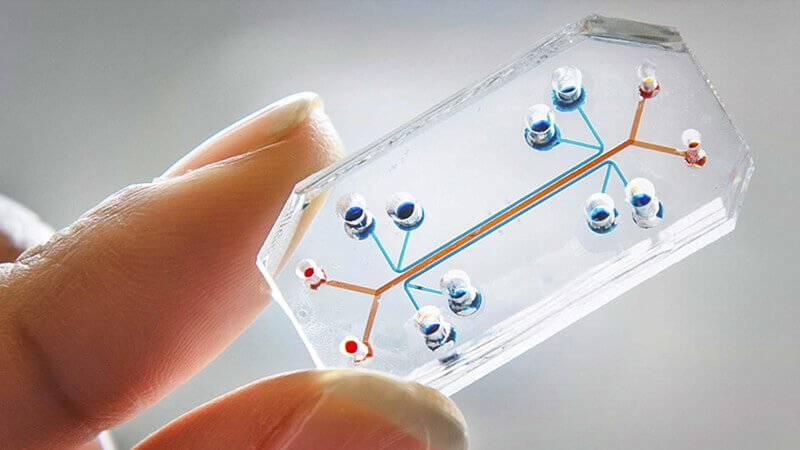
The development of modern drugs and cosmetics is a pre-human clinical trial and requires animal testing. In animal experiments, it takes time and money to obtain accurate results, as well as ethical issues. However, recently, research on reproducing human organs on a memory stick-sized chip is underway, and it has the potential to help accelerate drug development and reduce animal experiments.
In order for a single drug to be developed and entered the market, it must cross several gateways. It usually costs more than 10 years and considerable R&D expenses. There is also an estimate that the proportion of drugs that are actually approved and provided to the clinic is only 13.8% of the drugs tested. Human experiments are required at the final stage of development, but experiments are conducted on cells or animals grown in the process.
Experiments using cultured human cells are relatively inexpensive, but they are conducted under conditions far from the in vivo environment. In some cases, cells lose their original function. In addition, in experiments with animals, it is possible to evaluate the process of drugs surrounding the whole body, but due to species differences, it is difficult to reproduce the same conditions as in humans, and it is difficult to accurately grasp the efficacy and safety of drug candidates. For example, there is a possibility that the development of promising drugs will be halted at the stage of animal testing, as side effects that are not seen in monkeys appear in humans or vice versa.
The development of a human body-on-chip that reproduces the physiological functions of human organs with a chip is attracting attention as a technology to overcome such a drug development bottleneck. In 2010, a research team at the Wyss Institute, a research institute at Harvard University, announced that they developed an organ chip that reproduces lung function.
The organ chip is the size of a computer memory stick and is a microfluidic culture device made of a transparent and flexible polymer. The chip consists of two channels separated by a porous membrane. Specific organ cells are cultured in the one channel that mimics an organ, and vascular endothelial cells are cultured in the other channel that mimics blood vessels. Independent liquids are sent to the two channels to maintain organ model functions, but exchange molecules such as cytokines, administered drugs, and metabolites that decompose drugs through the channel separator.
The research team has already succeeded in developing organ chips such as intestines, liver, kidneys, heart, lungs, and skin. The new study says that by connecting vascular channels each with an organ chip, not only individual organs, but also organ chip models that mimic the human body can be made to analyze how different organs react when administered with drugs.
The research team created a model connecting several device chips to find out how drugs are absorbed and how they reach the target site when administered to a living body, investigate pharmacokinetics and drug action in vivo, and investigate drug effects from a pharmacodynamic perspective. I’m looking forward to doing it.
The research team conducted several experiments to evaluate a model that connected several organ chips. In the first study, a highly optimized blood substitute was sent with eight organ chips connected. The device was able to sustain all tissue and organ function for 3 weeks. In addition, it is said that the amount of chemical substances in each organization could be predicted quantitatively.
In the second study, a model capable of exchanging blood and drugs between organ chips like living organisms was constructed by connecting organ chips connected to each other to a fluid mixing tank. Then, by administering nicotine from an organ chip that mimics the intestine, nicotine was absorbed in the intestine, metabolized in the liver, and eventually the intake of nicotine excreted from the kidneys was simulated. In this model, the research team analyzed nicotine uptake and metabolism and compared it with data obtained from real humans. As a result, it was confirmed that the factors such as the maximum nicotine concentration and the time until nicotine reaches each tissue were strictly reflecting the data confirmed in real humans.
The research team also measured the pharmacological action of cisplatin administered as an anticancer drug using a model combining several organ chips. The research team revealed that it is expected to increase interest in the pharmaceutical industry and gradually reduce animal experiments in that it is possible to imitate a living body at this level using organ chips. Related information can be found here .

